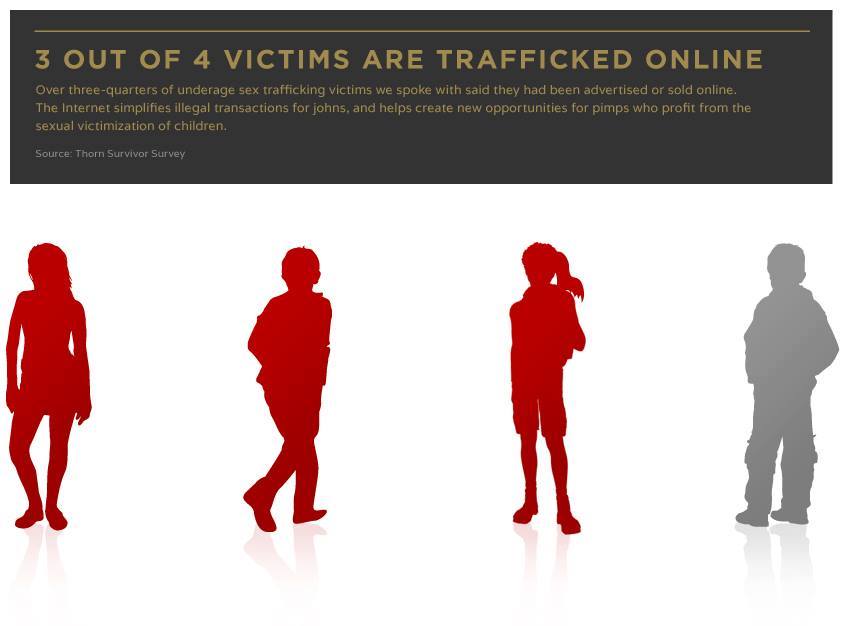 From The Chicago Bureau:
From The Chicago Bureau:
For years, the sex trade was "their" problem, a heinous part of culture in poorer nations. But attention here to sex trafficking has slowly increased in recent years with the reauthorization of the Trafficking Victims Protection Reauthorization Act and other federal state laws.
Still, males remain a largely invisible population within the dialogue on sex trafficking. According to a 2008 study by the John Jay College of Criminal Justice, in fact, boys comprised about 50 percent of sexually exploited children in a sample study done in New York, with most being domestic victims.
However, the percentage of male victims may be higher due to the underreported and subversive nature of the crime, said Summar Ghias, program specialist for the Chicago-based International Organization for Adolescents.
“We’re conditioned as a community to identify female victims more readily,” she said, “because that has been the more prominent focus of the anti-trafficking movement.”
Despite these high percentages of commercially sexually exploited boys, a 2013 study by ECPAT-USA indicates that boys and young men are rarely identified as people arrested for prostitution or rescued as human trafficking victims, and are arrested more for petty crimes such as shoplifting.
Experts say that the law enforcement’s attitudes toward male victims are still weighed down by gender biases in trafficking discourse, which pins females as victims and males as perpetrators. Therefore, male victims in custody often fall through the cracks of services that could be offered to help them because they are not properly assessed for sexual exploitation.
“Responses are more or less the same – how can a boy be trafficked, they’re much stronger than girls, they could get out of it if they wanted to so,” says Genna Goldsobel, state policy coordinator of ECPAT-USA, a national anti-trafficking organization based in New York.
Many people also mistakenly associate male prostitution with homosexuality, when a majority of the trafficked youths are not gay, said Steven Pricopio, program coordinator of Surviving Our Struggle, an aftercare center for young male trafficking victims.
 “When people think about male prostitution, they think of it as gay phenomena, that [the boys] are in control of what they’re doing,” Pricopio said. “They don’t see them as victims … It’s not an issue of sexual orientation, it’s an issue of right circumstances which bring you to exploitation or the vulnerability that brings you into being sexually exploited.”
“When people think about male prostitution, they think of it as gay phenomena, that [the boys] are in control of what they’re doing,” Pricopio said. “They don’t see them as victims … It’s not an issue of sexual orientation, it’s an issue of right circumstances which bring you to exploitation or the vulnerability that brings you into being sexually exploited.”
Male victims come from similar backgrounds as female victims, often raised in broken families with a history of neglect and abuse, with at least 70 percent having experienced sexual abuse as children, Procopio said.
A 14 year-old male from the John Jay study, who started prostitution at age 12, said that his family’s neglect contributed to his apathetic attitude toward his own life.
“My mother, she’s lazy; she wouldn’t care,” he said. “She would care if I
died, but that’s all she cares about.”
The extent of their trauma is amplified due to their previous experience with sexual violence from a young age, making it difficult for them to identify as victims.
LGBTQ youth, who are more likely to be kicked out of their homes due to their sexual orientation or gender identity, may comprise about one-thirds of this population, according to the John Jay study.
The other two-thirds are made up of non-gay youth and “gay for pay” victims, or young heterosexual men who have sex with other men, said Meredith Dank, Senior Research Associate at The Urban Institute, a Washington D.C.-based think tank.
One 18-year old male from the John Jay study said that although he was heterosexual, he slept with men to sustain himself: “I just gotta do what I gotta do and so I can eat every day. I don’t like the fact that I have to be with another man, just to survive. That’s what I hate the most.”
Once on the streets, young men are often lured into prostitution not only by pimps, but also by friends through peer networks that may stand to earn cash for “helping them out,” which confuses the cycle of exploitation, Dank said.
A 15-year old male from the John Jay study said he was pressured into the work by his friends, saying that “I didn’t know my friends did that — that they sold their bodies.”
Boys are bought and sold in both online and offline venues such as clubs and bars and websites such as backpage.com. Buyers are mostly white and upper-middle class men, and are often professionals with lots of flexibility in their schedule, Procopio said. However, 40 percent of the boys in the John Jay study also reported that they had served a female client.
“It makes boys more distrustful of authority figures because [the buyers] are authority figures,” he said.
Identification of male victims is difficult not only due to the lack of awareness, or focus, from law enforcement and service providers, but also the reluctance of boys to speak up.
Victims are unwilling to come forward to service providers, which may include doctors, social workers, and probation officers, due to feelings of shame and stigma.
An 18-year old male from Bronx in the study reflected on the guilt he associated with his work: “My mother taught me a lesson. If you’re ashamed a sumpin’… don’t do it, you know? … but at the same time, when you’re in the position that I’m in, it’s hard to live by it.”
Others are concerned that the service provider will try to criminalize their social network, said Anthony Marcus, who helped draft the John Jay study. The paradigm of child sex trafficking is unappealing to many victims, who may have children themselves and use prostitution for survival, he said.
“A lot of them don’t see themselves as children and don’t see themselves as victims and don’t see themselves as having suffered abuse so it puts a damper on the desire to go to any service professionals,” Marcus said.
Illinois passed the Safe Children Act in 2010, which is meant to protect minors who have been forced into prostitution from criminal prosecution, and place them in the child welfare system instead of the criminal justice system. However, many victims are still reluctant to reveal their victimization because they are unwilling to enter the foster care system, Dank said.
Male victims of trafficking also face a severe lack of aftercare and reintegration services, which may include both short-term and long-term housing options, education and job placement programs, and mental health services. The youth from the study echoed this need for more long-term housing. An 18-year old male from the study described the process of going from shelter to shelter: “Them shelters are 90 days. So, I gotta crash at a friend’s house, stay in a open-door type, and get my name back on the list to get another 90 days.”
According to the ECPAT-USA study, out of the 40 informants contacted, only four out of 25 shelters for commercially sexually exploited children serve boys, leaving them no choice but to return to their homes or the streets where they face potential re-exploitation. The absence of services tailored for male victims stem from the lack of general awareness about their experiences and victimization, Procopio said.
Without more concrete numbers on male victims of trafficking, funders may be unwilling to donate to shelters specifically tailored for their needs, Goldsobel said.
“When you don’t have statistics, it’s hard to get funding. If you don’t have funding, then you’re not helping victims and they get re-victimized and it comes full circle,” she said.

I have spent the last twelve years writing a novel that deals with the connections between child sex trafficking and the occult. I think you may find it sheds light on this topic.If interested,check on my video at:http://www.youtube.com/watch?v=P0RhNR53Pg8
For FREE audiobook or ebook, go to http://paradisewars.com .